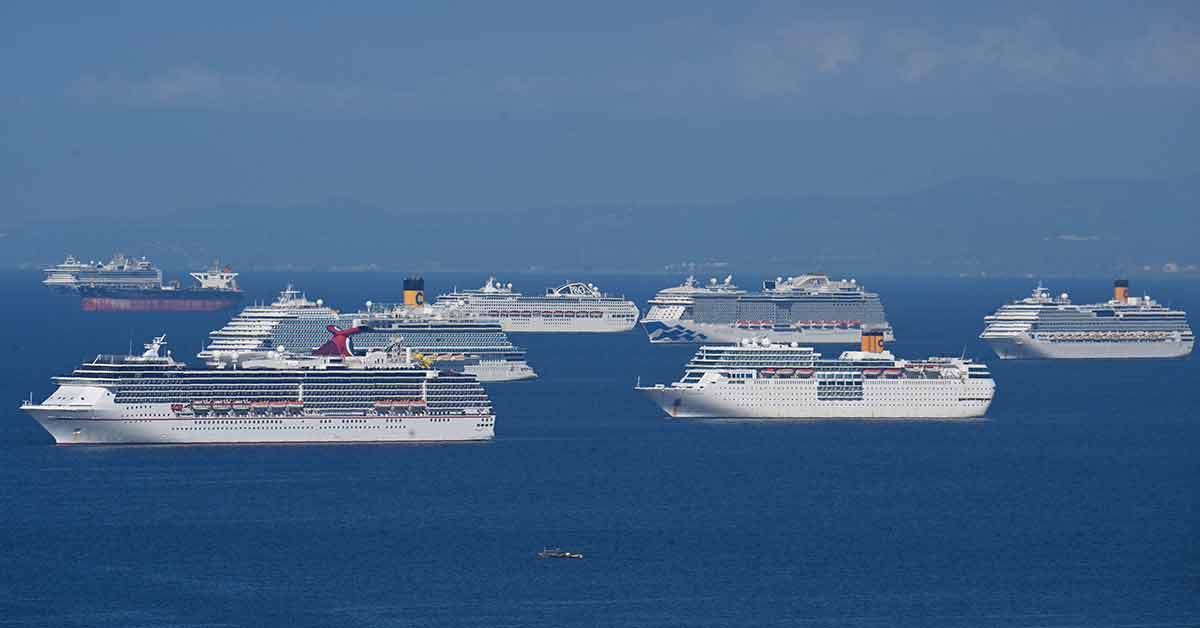Table Of Content

According to the CDC, the most common settings for norovirus outbreaks are health care facilities, restaurants or catered events, schools, day cares and, of course, cruise ships. There have already been an unlucky 13 recorded norovirus outbreaks on cruise ships under U.S. jurisdiction so far in 2023. That’s the highest tally in 10-years, ever since 16 such outbreaks occurred in 2012, according to the Centers for Disease Control and Prevention (CDC) Vessel Sanitation Program. And with half of 2023 still to go, there’s a good chance that the 2012 count will be surpassed sometime later this year.
Norovirus Cases Are Rising on Cruises. Here’s How You Can Stay Safe
Still, taking certain steps to prevent the likelihood of getting sick is never a bad idea. What’s more, the CDC has established a rigorous Vessel Sanitation Program (VSP) to help prevent the overall spread of illnesses on cruise ships. Not only do they inspect a cruise ship’s medical center, but they also monitor their portable water systems, dining rooms, housekeeping procedures, heating, ventilation, air conditioning (HVAC) systems, and more.
What happened onboard the cruise ship where more than 150 people got sick? - MD Linx
What happened onboard the cruise ship where more than 150 people got sick?.
Posted: Thu, 15 Feb 2024 08:00:00 GMT [source]
Environments Where Norovirus Spreads Quickly
When such symptoms are noticed, passengers should take precautions to prevent intensifying the disorientation. Major (in some cases epidemic) illness outbreaks are among the "biggies" that can bring down the brand's reputation on the market. Cruise illness issues often result in lower booking rates and cheaper prices - which is bad for the business. Some people are at higher risk of developing severe norovirus symptoms — these include infants, the elderly, and people with compromised immune systems, Ostrosky noted. There’s no specific treatment or antiviral for norovirus, according to Ostrosky, but most cases can be managed at home with supportive care like hydration and rest. Sick people should also isolate until their symptoms resolve, the experts emphasize.
Norovirus outbreaks 2023 reports
Silversea notified guests and crew of the outbreak via announcements and encouraged them to report cases and practice “good hand hygiene,” the CDC said. The line also isolated those who were sick and implemented heightened cleaning and disinfection measures. A norovirus outbreak can cause significant disruption to the planned activities and itineraries of a cruise. Infected individuals must be isolated, common areas may need to be closed for cleaning, and in severe cases, the ship may even have to return to port. As 95 of the world's top 100 largest megapolises are port cities, "hospital ships" could provide healthcare very quickly and more efficiently to large numbers of people.

During the most recent outbreak, a 14-day cruise aboard the Viking Neptune in June, slightly over 13% of passengers (110 of 838) reported being ill with predominant symptoms of abdominal cramps, vomiting, and diarrhea, according to the CDC. The WHO reports that influenza, a respiratory tract infection, is common on cruise ships. The Centers for Disease Control and Prevention (CDC) says that influenza or similar illnesses can occur at any time of year and are not seasonal. That is a reflection of the fact that cruise ship passengers come from countries around the world that are experiencing different seasons.
If your immune system is compromised, your doctor may want to prescribe something ahead of your trip. “Handwashing, cleaning your stateroom, watching what you eat and how much you eat, and making sure that you stay hydrated will go a long way in preventing these illnesses, from you catching them even if they are there,” she says. Psychology Today, a Substack entitled "Minded by Science" and have written articles for The New York Times, Time, The Guardian, The HuffPost, STAT, the MIT Technology Review and others.
▪ While there is no specific treatment to treat the illness, the CDC recommends drinking lots of water or other drinks, like sports drinks, that don’t have caffeine or alcohol to help avoid dehydration. According to the CDC, flu season in the southern hemisphere, which includes Australia and parts of South America and Africa, typically runs April through September. A new AARP survey shows 81 percent of adults 50-plus who plan to travel in 2023 believe it’s safe to do so now, up from 77 percent in 2021. And while interest in cruising is down slightly among the 50-plus population this year compared to last, a recent AAA survey finds that, overall, the share of travelers considering a cruise vacation in 2023 is up. "We look forward to a future when more people are vaccinated and the numbers are lower, perhaps we're over the delta variant," Ostrosky says.
And of course, board the ship with the understanding that no matter what happens, you're taking a risk. Here's everything you need to know about Norovirus -- and how to avoid getting sick on your next cruise vacation. Daigle laid out the progression of how cruise ship color codes are updated by the CDC. "It is important to know that there is at least a two-day lag in the posting of an updated color status," the CDC's Daigle told USA TODAY. Yellow means reported cases meet the CDC's threshold for investigation.
When the Covid pandemic hit, the CDC made a travel health notice advising against cruise ship travel. Because of this, there were no norovirus outbreaks in 2020 and 2021. However, in March 2022 the agency dropped the health notice, though it strongly urged against cruising without a booster shot. There are also behind-the-scenes procedures that cruise lines must follow. For instance, medical officers are required to maintain illness incident counts for each voyage that involves a stop at an American port.
However, unlike on land, most basic travel insurance policies don't cover medical treatments on cruise ships as they are not from the patient's primary caregiver. Purchasing cruise travel insurance with health coverage (medical clauses) is highly recommended. Passengers sensitive to nausea or motion sickness should consult their doctors for medical recommendations prior to departure. At the cruise ship's Infirmary, and also at Reception Desk is provided (free of charge) Meclizine. Also, motion in midship-located areas (including staterooms) is highly reduced in comparison to forward and aft areas.
The International Association for Medical Assistance to Travellers (IAMAT) has prepared a summary on how to stay healthy on a cruise. Measles, a highly contagious virus that can linger in the air even hours after an infected person leaves the room, was declared eliminated from the U.S. in 2000, thanks to a successful vaccine program. But cases still pop up in the States, and the virus is common in many countries around the world. According to the Cruise Lines International Association, the risk each year of getting laboratory-confirmed norovirus during a ship outbreak is about 1 in 5,500. The association, which says it is the largest cruise industry trade association in the world, noted on its website that crew members use strict sanitation and cleaning practices created with the CDC’s Vessel Sanitation Program. Cabins are cleaned once a day, and other common areas, such as elevators and pools, are cleaned multiple times a day.
Cases typically last between 24 and 48 hours, though the illness may be more severe in young children and older adults, according to the Arizona Department of Health Services. Severe cases usually involve dehydration due to loss fluid—death is rarely ever a result. What causes Norovirus on cruise vessels is mainly contaminated food/water. When it comes to ships, it spreads mostly through physical contact with sick people or handling contaminated objects. This includes sharing food/utensils and poor hygiene (not washing hands after bathroom use).
The hotel staff is required to implement special cleaning and disinfection procedures for sanitizing the whole ship. To do that, they use stronger solvents, like Microbac, chlorine bleach, hydrogen peroxide. The Lido Deck's bistro/buffet service switches to manned stations. Sick passengers and crew are quarantined in their rooms, typically for at least 2 days. When Norovirus outbreaks can't be contained, cruise lines might also pull the ship out of service for a few days for sanitizing.
On day two, cases are reported to the CDC, data is pulled from REDCap and the color status is assessed by the agency. On day three, the color status is updated on the agency's public website. Every major cruise line has detailed procedures for handling coronavirus cases on board and protecting fellow passengers and crew. Orange status means the ship has reported cases among passengers and is being monitored but levels don't meet the threshold for CDC investigation. There were only three ships with orange status as of Monday morning.
"Ship color status is determined using surveillance data from the previous 7 days – regardless of voyage dates – and CDC investigation findings," the CDC says on its website. Just one case of coronavirus or COVID-19-like symptoms could prompt the CDC to monitor or investigate a ship, which is why it's important to understand how the CDC determines ship status and where to find the latest ship-specific information. Even though you may be tempted to conceal your illness, you would be doing a great disservice to the other passengers and the crew on the cruise by keeping it a secret. To see how your specific cruise line performed on its VSP inspections, you can visit the CDC website and search their portal.

No comments:
Post a Comment